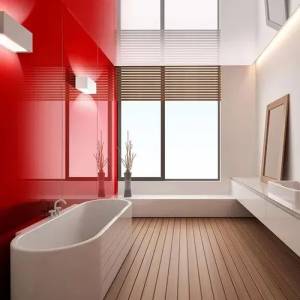Description
Acrylic: Versatile, High-Performance Plastic
Acrylic, also known as polymethyl methacrylate (PMMA) or plexiglass, is a transparent thermoplastic offering a remarkable combination of properties that make it ideal for a vast range of applications. Its superior clarity, durability, and ease of fabrication have established it as a preferred material across various industries.
Key Features & Benefits:
- Exceptional Optical Clarity: Acrylic boasts significantly higher light transmission than glass, offering unparalleled clarity and brilliance. This makes it perfect for applications where visual appeal is paramount.
- High Impact Resistance: Significantly more impact-resistant than glass, acrylic is less prone to shattering upon impact, making it a safer alternative in many scenarios. It's resistant to cracking and chipping, ensuring longevity.
- Weather Resistance: Acrylic exhibits excellent resistance to UV degradation and weathering, maintaining its clarity and structural integrity even under prolonged exposure to sunlight and harsh environmental conditions. This is crucial for outdoor applications.
- Lightweight: Considerably lighter than glass of equivalent thickness, acrylic is easier to handle, transport, and install, reducing labor costs and improving overall efficiency.
- Versatility in Fabrication: Acrylic is easily machinable, allowing for precise shaping, cutting, drilling, and polishing. It can be thermoformed into complex shapes, offering unparalleled design flexibility.
- Easy to Clean: Its smooth, non-porous surface makes acrylic easy to clean and maintain, requiring minimal effort to keep it looking pristine.
- Chemical Resistance: Acrylic offers good resistance to a range of chemicals, though compatibility varies depending on the specific chemical and concentration.
Applications:
Acrylic's versatility shines through its wide range of applications, including:
- Displays & Signage: From museum exhibits to retail displays and outdoor signage, acrylic's clarity and durability make it an ideal choice.
- Architectural Applications: Used in windows, skylights, partitions, and other architectural elements, acrylic provides both aesthetic appeal and structural integrity.
- Automotive & Transportation: Found in lighting fixtures, instrument panels, and other components, acrylic offers a balance of lightweight strength and optical performance.
- Medical Devices: Its biocompatibility and ease of sterilization make acrylic suitable for certain medical devices and equipment.
- Lighting Applications: Acrylic's light transmission properties are exploited in various lighting applications, from diffusers to lenses.
Types & Grades:
Acrylic is available in various grades and types, each tailored to specific needs:
- Cast Acrylic: Offers superior clarity, scratch resistance, and dimensional stability compared to extruded acrylic.
- Extruded Acrylic: A more cost-effective option, often used for less demanding applications.
- Colored Acrylic: Available in a wide range of colors and finishes to suit diverse design aesthetics.
- UV-stabilized Acrylic: Specifically formulated to resist UV degradation for long-term outdoor use.
Choosing the Right Acrylic:
Selecting the appropriate type of acrylic depends on the specific application requirements. Factors to consider include desired clarity, impact resistance, UV resistance, budget, and required fabrication techniques. Consulting with a material specialist can ensure the optimal selection for your project.
Conclusion:
Acrylic's unique combination of properties makes it a highly sought-after material across a wide range of industries. Its versatility, durability, and ease of fabrication offer unparalleled design flexibility and cost-effectiveness. Whether you need a visually stunning display, a weather-resistant sign, or a robust component for a technical application, acrylic is a material worth considering.
